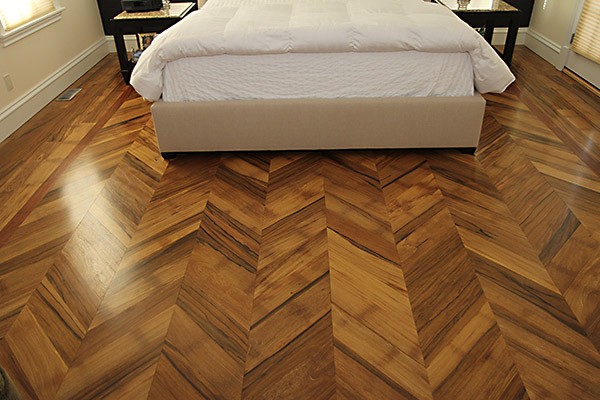Choosing a topcoat for your hardwood floor can be confusing, but we can help you make that decision. Let us compare them both concerning look and feel, application, durability, and environmental impact.

Photo by © Hardwood Floors Magazine
1) Topcoat look and feel
Both oil- and water-based finishes serve as a protective layer that gives a remarkable gloss to the hardwood. The biggest difference between these two is the amber tint of oil-based topcoat contrasted to the nearly perfect clearness that water-based provides.
Oil-based accents wood with a golden shade, but it tends to darken gradually with time. Water-based starts clear and stays clear in the long run.
2) Topcoat Water vs. Oil Application
Oil-based usually requires from eight to twenty hours to dry, which puts the project area out of service for a couple of days. It also emits a heavy chemical odor, and tools require solvents to be cleaned.
Water-based dries extremely quickly, allowing the possibility to apply all four needed coats in a single day. Also, it emits very little odor, and cleaning the tools requires only water.

Photo by © Hardwood Floors Magazine
3) Topcoat durability
Both oil- and water-based do an outstanding job of protecting the hardwood from damage. They can, however, show scratches and wear marks with time. Here are some great ways to avoid damage over time with some simple steps.
4) Topcoat environmental impact
Water-based topcoat finish can be safer and far superior to the oil based. Also, it complies with the “clean air legislation standards” in Colorado. The biggest environmental concern surrounding wood topcoat is their release of volatile organic compounds (VOCs) into the air. This gas contributes to the greenhouse effect and can cause long-term health issues if inhaled for extended periods of time or excessively. Oil-based releases significantly more VOCs than water-based, which is why water-based is always the best option.

